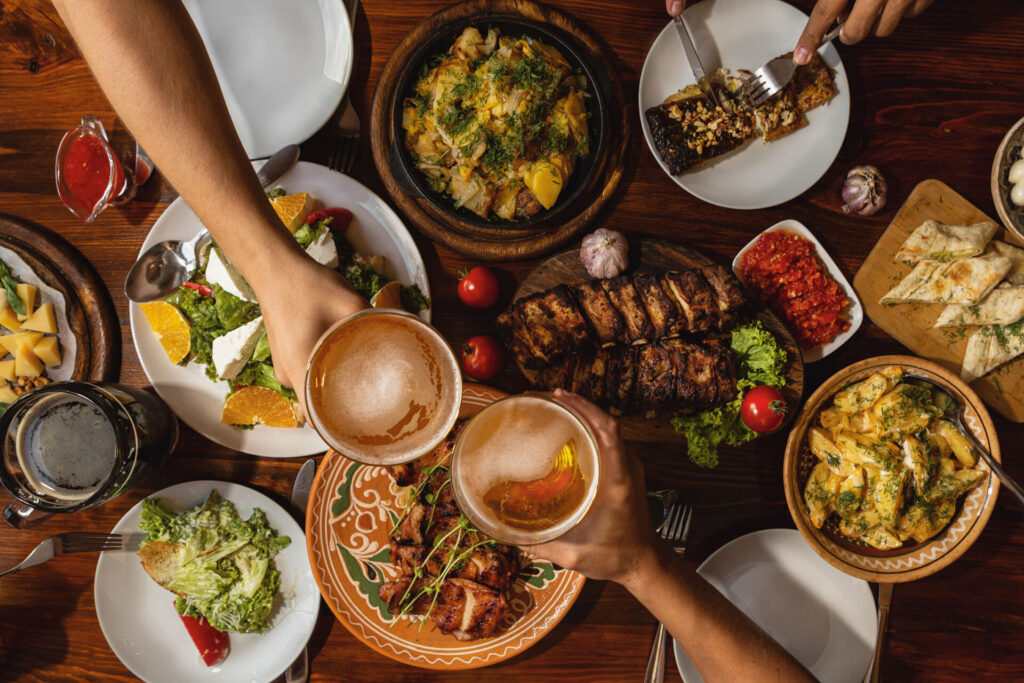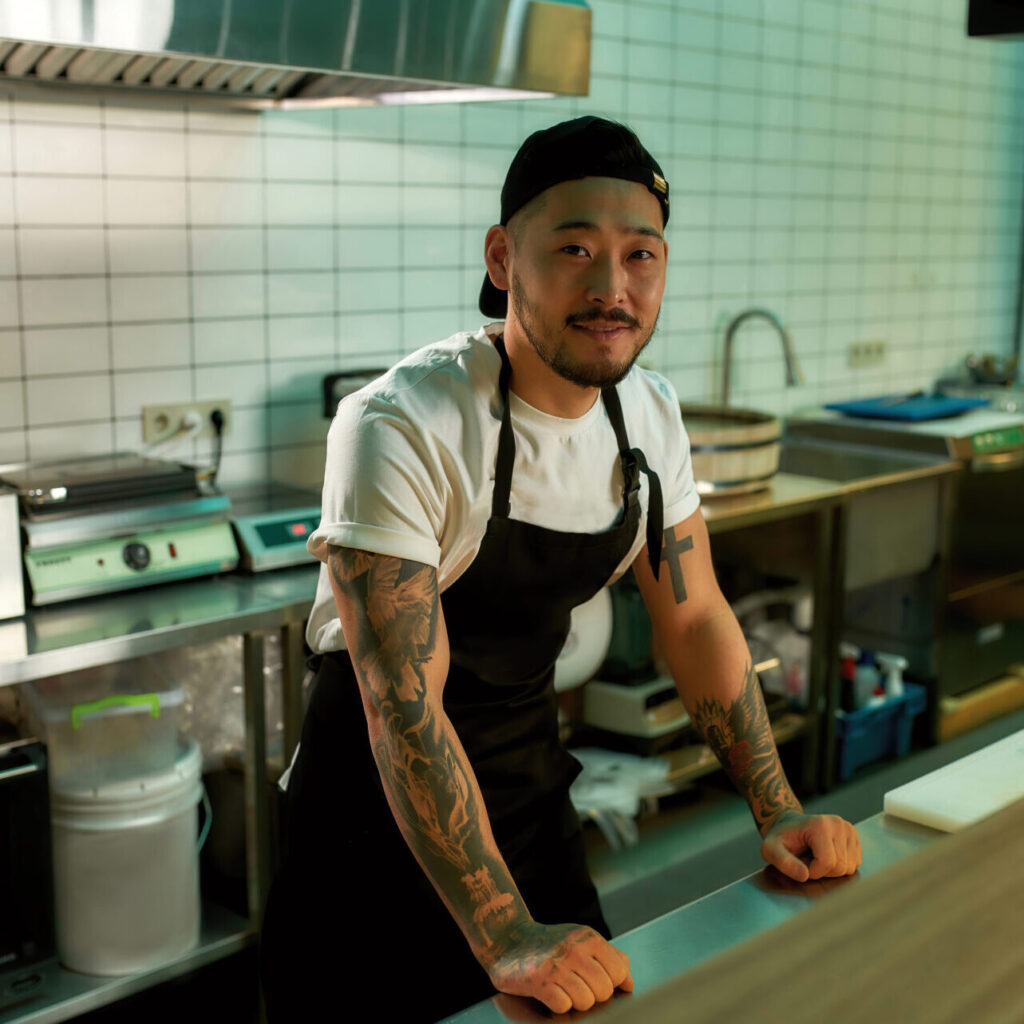Publishing for Restaurants
The age of self-publishing is here. Restaurants can boost margins and build brand loyalty by engaging the senses with cookbooks.
Well-worn, dog-eared with pages bookmarked with flour, butter and sauces, most kitchens have beloved cookbooks that have become part of the family. These recipes fill bellies and create memories of family dinners, parties and backyard barbeques with friends that last long after the day is done. Cookbooks are more than just books, they’re important cultural artifacts. What was popular in the 1970s is quite different than in the 1990s—how people hosted dinner parties, what they packed in their children’s school lunches, or even the amount of time available to make dinner. Far-reaching societal changes are serialized over decades in the pages of cookbooks. We see food habits change and learn about how different people and cultures procure and prepare food through the way recipes are written. Cookbooks can serve as a way for people to understand different terroir, traditions, periods in time and styles of cooking, but they also provide a way for people to relive the moments and places that have shaped their lives. And, many of those moments happen in restaurants.

Cookbooks are a way for restaurants to create a lasting mnemonic link between their dining experience and the dining tables of their customers. They are a way to share not only the food they serve, but their culinary and social philosophy and the story of the people behind the plate. This is an established idea that can be repositioned for the next chapter in resto marketing, retail and food tourism facilitated by the rise of affordable self-publishing options.
There have been many memorable and sought-after cookbooks published by Canadian restaurants, including Maenam (Vancouver, BC), Wickaninnish Inn (Tofino,BC), Araxi (Whistler, BC), Duchess Bake Shop (Edmonton, AB), Atelier (Ottawa,ON), Joe Beef (Montreal,QC), The Inn at Bay Fortune (Fortune, PEI), to name but a few. What’s new in the industry is the approach to these books and the restaurant formats now taking advantage of the opportunity to plant their culinary and experiential brand flag.
Restaurants that build a bonded community around their venue, menu and experience will be more successful, and cookbooks are a great platform to invite people into the tent.
Ciabh McEvenue
Co-owner and Creative Director
Arable Brand
In June 2022, Earls restaurant which opened its first restaurant on Calgary Trail in 1982, released an updated version of its popular Earls The Cookbook in celebration of its fortieth anniversary. Inside you meet the Earls family, get introduced to the test kitchen and some of the restaurant chain’s most popular recipes.
Langdon Hall in Cambridge, Ontario released Langdon Hall A Cookbook in April 2022 featuring seasonally inspired recipes with notes on techniques, wine pairings and stories about ingredients, cooking, farmers and purveyors from Chef Jason Bangerter. Beautifully shot on location, you can order the cookbook directly from Langdon Hall’s website. The award-winning restaurant The Acorn in Vancouver, released Acorn Vegetables Re-imagined is a seasonally organized cookbook that celebrates plant-based cooking with a focus on minimizing waste and maximizing the potential of each plant.
A smaller compendium of favourite recipes simply produced but containing some of your customers’ favourite recipes may be a great way to mark a moment in time of your restaurant. A cult favourite, the Hominy Grill Recipe Book contains 20 of the most requested recipes from the restaurant that closed in 2019 after 24 years in business. Their online shop remains open for sales of their cookbook, coffee mug, grits and jam.
While most restaurants may not be in a position to mass publish a cookbook, there are equally effective ways to self-publish your own cookbook to share with your customers. Smaller, local print houses can take on the job of affordable printing and binding your masterpiece. Many offer small-run, high quality options. There are also templates for cookbooks available online through photobook and self-publishing sites, some of which have print-on-demand services.

Ciabh McEvenue, co-owner and creative director at Arable Brand, a creative design and strategy agency focused on food brands, notes a widening opportunity for restaurants to create cookbooks to build brand engagement and loyalty. “While it’s true that many of the great restaurant cookbooks have come from fine dining and gastro/culinary tourism, demand for simple comfort food recipes and even fast-food recipes is rising. Fast-food copycat recipes are all over TikTok because the familiar flavours provide comfort. Many of these recipes use lower-cost, pantry-friendly ingredients and are easier to make, which is very much on point for consumers right now. As food prices skyrocket, people will seek to satisfy their desire for experiences within their budget. Experimenting with restaurant recipes at home satisfies some of the craving for experience while reinforcing a consumer’s connection with the restaurant brand. It doesn’t take away from return visits though, because you can bet that making Anthony Rose’s roast cauliflower at home will never replace the sensory immersion of dining out at Fat Pasha.”
McEvenue points out another advantage: fun. She suggests that friendly, approachable restaurant brands have a unique opportunity to “break” the common narrative conceits and create a cookbook that’s as casual, as quirky, as personal or as unpretentious as the restaurant experience. “Restaurants that build a bonded community around their venue, menu and experience will be more successful, and cookbooks are a great platform to invite people into the tent. They’ll buy the book for the recipes, but the narrative in between is where restaurants can really connect and grow affiliation and loyalty. Adding memorable, authentic stories of the people behind the food and experience gives customers a broader opportunity to relate to the concept and philosophy of a restaurant as a human-led, cultural institution worth belonging to and engaging with. Ideally very often.”
Thinking of publishing a cookbook to promote your restaurant? Before you get started, here are a few practical considerations.
WHAT KIND OF RESTAURANTS SHOULD PUBLISH A COOKBOOK?
Any restaurant format can benefit from publishing a cookbook, but should have an established, loyal customer base, a food-based reputation, and a clear understanding of its brand and position within the community it serves.
WHAT STATE ARE YOUR RECIPES IN?
Does your current menu feature items with a “secret ingredient” known only to a few? If you’re considering your repertoire of recipes, are they all written down with clear, step-by-step instructions geared toward a novice home cook, or completely the opposite? Writing a cookbook for home use might be a great way to get down on paper the precise way a dish should be prepared and cooked, scaled for smaller servings. Make a list of all the recipes you would include in your cookbook, with ingredient lists, precise measurements, and clear instructions on preparation, cooking and serving. Remember, the person cooking from your cookbook won’t have the ability to ask questions, and likely isn’t a trained chef—everything needs to be covered in your recipe.
WHAT ELSE CAN THIS RECIPE DO?
Does this recipe freeze well? How should leftovers be stored and for how long? Are there any tips or tricks that might save time or add to the experience or knowledge of the cook? Are there parts of the recipe that can be prepped beforehand and used in more than one recipe? Is there a fun way to change up leftovers? Consider the home cook and what would appeal to them.
HOW CAN YOU BRING YOUR RESTAURANT TO LIFE IN SOMEONE ELSE’S KITCHEN?
Cookbooks are a way to tell stories and to build connections with your readers. Weave in a story about an occasion to serve a specific recipe. Add in anecdotes about how and on what occasion a dish or dessert is served at the restaurant. Explain why it’s on your menu/why it’s still on the menu/why it was retired from the menu and explain why it should be on regular rotation in your readers’ kitchens.
DO I SHARE EVERYTHING?
Save your best recipes for your restaurant’s kitchen…or not. It really comes down to confidence in the likelihood that home chefs will not be able to replace a visit to your restaurant by making your food at home. If the most popular menu item takes days to prepare, sharing the recipe may make the reader appreciate the amount of work and skill it takes to bring their favourite dish to the table. You also may want to share some cocktail favourites or wines that you recommend by sharing some stories about patrons who order the same pairings or if you keep something on a secret menu for long-time patrons or special guests. Including complementary wine recommendations or cocktail recipes could also offset the cost of cookbook production by opening the door to paid partnerships and cross-promotion.
SHOULD I TEST MY RECIPES?
Yes. Make sure they’re written in a way that explains each step, in quantities for 4-6 people. Easy recipe testers might be employees in your restaurant or some of your best customers. Involve people in the process and get them excited about what they’ll see.
DO I NEED TO HIRE A PROFESSIONAL PHOTOGRAPHER/COPYWRITER/GRAPHIC DESIGNER?
It depends. What do you envision for your cookbook and how does it fit with your restaurant. Would a fun, low-cost, old-school cookbook like a text-only collection of family recipes work for your restaurant brand? Or is a beautifully styled cookbook with photos with plated food more suitable? Keep in mind some of the most beloved recipes are on cue cards, handwritten and handed down from generation to generation. You may also have employees on your team who are skilled at photography, copywriting or graphic design. Also if you choose to use a pre-made template, you can save money on design and focus on good photography and writing.
HOW WILL I SELL MY COOKBOOK?
If you have space, you can merchandise your cookbook in a small area of your restaurant. You may also want to consider a line of branded merchandise. Is there a special spice blend or dip that your customers enjoy that’s used in the cookbook? Is there a way to refer to your spice blend in your cookbook? Do you have a cool mug that may make a great way to serve a dessert? Style and photograph the dessert in the mug and sell the mugs alongside the cookbook. Cross-promotion and retail merchandise can increase margins and show guests that a restaurant is established and worthy of appreciation.
WHAT ELSE DO I NEED TO CONSIDER?
A cookbook should represent your restaurant in every respect. Bring the same style, colour palette and sensibility to your design. Is there a local farm or butcher that you like to support? Add a credit to validate and share your procurement practices. Add any details and/or certifications related to values like sustainability, social justice or advocacy. These efforts are important and if they’re core to your business, they should be shared and promoted. Use your cookbook to further community involvement or educate on issues you care about and the restaurant supports.
A labour of love, cookbooks are the perfect immersive scrapbook and promotional tool for restaurants. When they’re created with an end-to-end understanding of your food, culture and purpose and written for the people you’d most love to have in for dinner, they can create an enduring connection and keep the conversation going in between visits.









